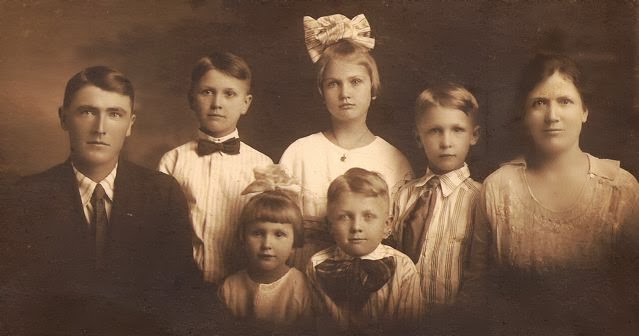When my paternal grandfather’s brother Dan Troutman’s
symptoms of mental illness started, I do not know. I thought it started after
his mother died, as stated in the last posting on this subject, but I’ve
learned that it was earlier. He was first hospitalized on 12 January 1929 just
two days before his mother died. A year and a half later on 30 June 1930, his
condition had improved enough that he was released.[1]
Located about thirty miles from Dan’s Glade Spring home, the
place of his confinement was a long established and reputable treatment
facility for the mentally ill, Southwestern State Hospital, now called
Southwestern Virginia Mental Health Institute, in Marion, Virginia. He was
diagnosed with manic-depressive psychoses, now called bipolar disorder; his symptoms
included “severe and recurrent depression or mania with abrupt or
gradual onsets and recoveries . . . . [recurring] cyclically.” Psychiatrists
said it was inherited.[2]
 |
| Early 20th century postcard photo of Southwestern State Hospital. |
Did Dan’s mother also suffer from bipolar disorder? Her foster
granddaughter Lois thinks so. The family stories about my paternal
great-grandmother, America Ann Pratt Troutman, described her as a high-strung
woman with a volatile temper. Her son Clint told stories about her tirades,
told of hearing his father say during his wife’s fits of anger, “If only I’d
never crossed those mountains.” Lois also witnessed such behavior from her
grandmother; America closed herself in her room for periods up to a week at a
time, Lois said.[3] America’s
symptoms must not have been as severe as Dan’s, however; she was never
hospitalized.
Opening in Marion in 1887, the Southwest Virginia Lunatic
Asylum, as it was then called, was considered state of the art: modern,
convenient, and economical. The central building contained six patient wards
(three for men and three for women) a kitchen, a bakery, two dining rooms
(separate for men and women), a laundry, a sewing room, an elevator, and rooms
for patients and attendants, and it was fully wired with electricity.[4]
From
its inception, the hospital included a complete working farm where many of the
patients planted, tended, and harvested cash crops; in addition, they tended pigs,
horses, cattle, and chickens. The grounds also included a shoe shop, broom and
mattress shop, and upholstery shop. Patients well enough and willing were
employed in all of these endeavors. The hospital was a self-sustaining
“community within a community.”[5]
The aim was “to keep the patients interested and the work pleasant.”[6]
Plans for additional wings to house more patients soon materialized. In 1902
the name of the hospital was changed to Southwestern State Hospital.[7]
The description of the place sounds idyllic. Dan would likely have enjoyed the farm work when he was able.
 |
| Henderson Building on SWVMHI campus, in recent years. Photo by Skye Marthaler, used by permission. |
From 1887 when the facility opened to
1929 when Dan was first admitted, many changes occurred to the physical
appearance of the campus. Outdated buildings were torn down and new and
improved buildings were added. More acreage was purchased which increased the
capacity for farming. World War I brought a rise in cost of goods and a
shortage of personnel. If not for the farm and gardens, it would have been
impossible to feed everyone.[8]
Many changes occurred in the treatment
of mental illness during those years, as well. I’ll save that for next time.
[1] Arnold, Karen, Health Information Technician,
Marion, Virginia, to Zola Noble, letter, 25 September 2015, includes information
from the Admission Register of SWVMHI; Dan Troutman folder, hanging files;
privately held, [ADDRESS
FOR PRIVATE USE] Anderson, Indiana.
[2]
Manic-depressive psychoses, “Glossary,” Restoring
Perspective: Life and Treatment at the London Asylum (http://www.lib.uwo.ca/archives/virtualexhibits/londonasylum/
glossary.html#manic : accessed 30 September 2015).
[3]
Faris, Lois, Glade Spring, Virginia. Interview by Zola Troutman Noble. Notes.
Privately held by Z. T. Noble, [ADDRESS FOR
PRIVATE USE] Anderson, Indiana. 29 April 2010. Lois was a foster daughter of Dan and Carrie Troutman. She lived with them from age 18 months until she left for college.
[4] A Brief History of Southwestern Virginia
Mental Health Institute, compiled by Phyllis Miller, (Virginia Department
of Behavioral Health and Developmental Services, Richmond, Virginia, 2012.), p.
4.
[5]
Ibid., p. 5.
[6]
Ibid., p. 6.
[7]
Ibid., p. 5.
[8] Ibid.,
p. 10.
© 2015, Z. T. Noble

No comments:
Post a Comment